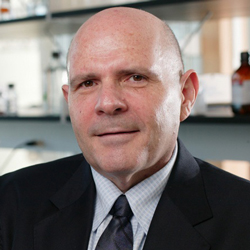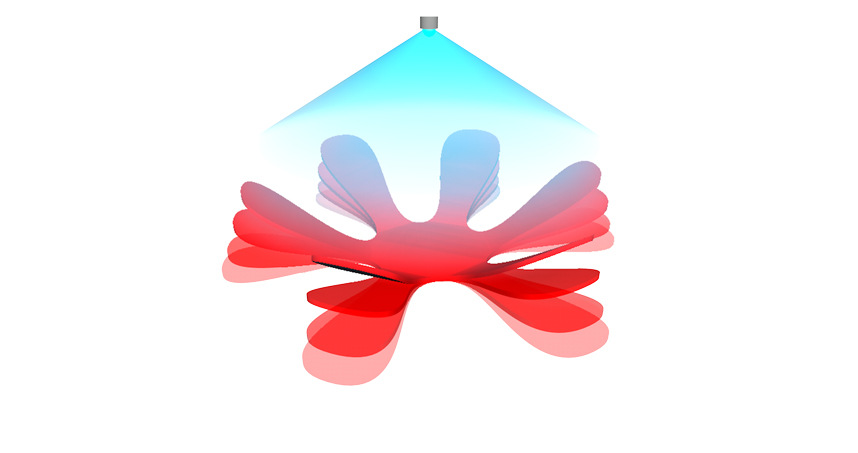Northwestern Receives $15 Million for Department of Energy Frontier Research Centers
Center for Bio-Inspired Energy Science will receive $12 million in renewal funding
Northwestern University research initiatives have received a cumulative $15 million from the Department of Energy (DOE) for the most recent funding round of the national Energy Frontier Research Centers (EFRC) program. The two selected proposals from Northwestern, the Center for Bio-Inspired Energy Science (CBES) and the Center for Light Energy Activated Redox Processes (LEAP), were among 42 programs collectively funded for $100 million to accelerate scientific understanding in energy-relevant fields.
The EFRC program was established in 2009 and is funded by the DOE Office of Science Basic Energy Sciences Program. CBES will receive $12 million in renewal funding for a four-year term. LEAP will receive $3 million in a two-year extension of a 2009 Argonne-Northwestern Solar Energy Research (ANSER) Center EFRC grant.
“We are very pleased that, once again, the DOE has chosen to invest in Northwestern’s robust research programs,” said Fruma Yehiely, associate vice president for research. “The leadership and expertise of our scientists, combined with the University’s commitment and success in developing high-impact, cross-disciplinary research makes Northwestern an ideal environment to pursue fundamental advances in energy and related fields. The new knowledge that will be generated holds the promise to fuel innovation that creates profound social and economic benefit, while also strengthening national energy security."
Both CBES and LEAP are part of Northwestern’s ecosystem of 53 University Research Institutes and Centers, interdisciplinary knowledge hubs that harness talent from across all areas of the institution.
About CBES
CBES is directed by Samuel I. Stupp, Board of Trustees Professor of Materials Science and Engineering, Chemistry, Medicine, and Biomedical Engineering at Northwestern and director of the Simpson Querrey Institute. CBES aims to discover and develop bio-inspired systems that reveal new connections between energy and matter. Funding from the EFRC will support CBES’ central research objectives with a focus on six specific areas.
 The new research questions address innovative approaches to photocatalysis that include hierarchical structures and mechanical enhancement of photocatalysis, synthesis of materials that behave as artificial muscles leading to the development of “robotic soft matter,” and new ways to store energy that are inspired by biomolecular structures.
The new research questions address innovative approaches to photocatalysis that include hierarchical structures and mechanical enhancement of photocatalysis, synthesis of materials that behave as artificial muscles leading to the development of “robotic soft matter,” and new ways to store energy that are inspired by biomolecular structures.
“Developing synthetic soft matter that can behave in an autonomous way, the way you expect living things to behave, is an enormous scientific challenge,” Stupp said. “It is not the kind of research that somebody would do in isolation in a lab. It requires integrating many fields of expertise and that is the perfect configuration for an EFRC.”
CBES integrates theory, computation and experiment, which, according to Stupp, has never been more important than it is now. The collaboration unites eight researchers at Northwestern and six additional researchers from Columbia University, Harvard University, New York University, University of Michigan and University of Pittsburgh. This is the second renewal for the organization that was known as the Non-Equilibrium Energy Research Center, which received initial EFRC funding in 2009. The transition to CBES occurred with the first renewal in 2014. Since 2009 the scientific team has produced 436 publications.
About LEAP Center
The LEAP Center will build on the scientific foundation of its predecessor EFRC, the Argonne-Northwestern Solar Energy Research (ANSER) Center, which was established in 2009 and renewed in 2014. LEAP’s mission is to develop the fundamental scientific understanding needed to use efficient light-driven multi-electron redox processes to power energy-demanding chemistry. Three focal areas include powering redox processes using unconventional organic and inorganic semiconductors, designing and synthesizing molecules and materials to use those charges to perform energy-intensive reactions such as water splitting and tailoring interfaces among organic or inorganic semiconductors to control charge flow to catalysts.
“We are proud of the work of the ANSER Center and are eager to build on that legacy to move our research to a deeper level through LEAP,” said Michael Wasielewski, Clare Hamilton Hall Professor of Chemistry and executive director of the Institute for Sustainability and Energy at Northwestern (ISEN). “New information discovered through the work of our researchers over the past nine years and the development of new concepts, molecules and materials has made it possible for us to find new ways to capture and store solar energy.”
The ANSER Center produced nearly 500 published papers that have already been cited more than 23,000 times by other researchers. LEAP comprises eight principal investigators from Northwestern and an additional eight from Argonne National Laboratory and Yale University.
Both CBES and LEAP aim to build on prior work to improve energy efficiencies in their respective areas of expertise, inform emerging researchers including postdoctoral researchers and graduate students about conventional and unconventional research areas and share new science and their findings through publication in high-impact journals.
Northwestern faculty will also participate in three other EFRC research teams housed at peer institutions: the Center For Electrolyte-Electrode Interface Science and the Center for Advanced Materials for Energy-Water Systems — both at Argonne National Laboratory — and the Inorganometallic Catalyst Design Center at the University of Minnesota.
